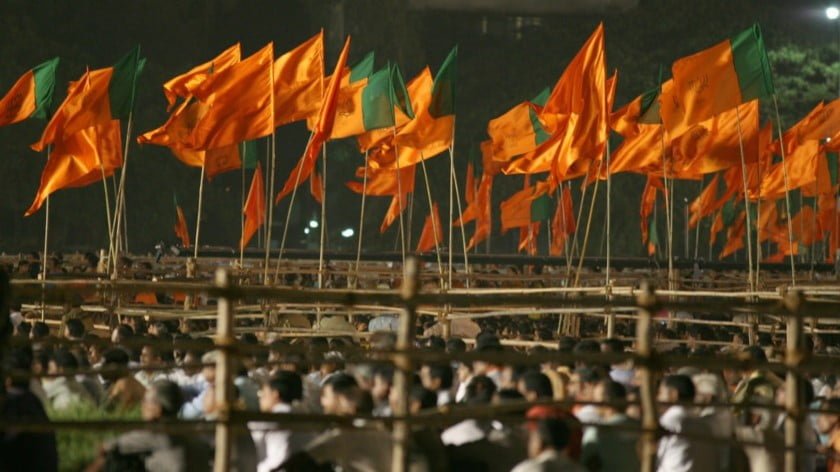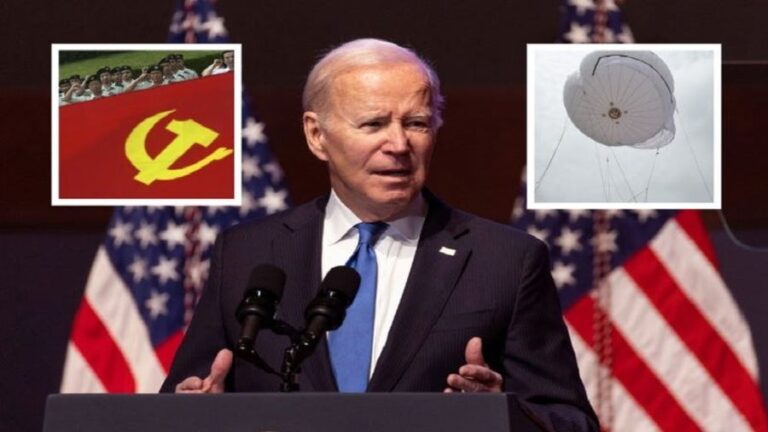The Political Crisis in Sri Lanka
The last year has seen the escalation of two processes which are rewriting the global political map, triggering an international crisis which is unfolding and taking in more and more countries as we watch. The two processes behind the crisis may take on very different forms.
Ukraine seems destined to become the fuse that could ignite a global fire, risking both its own destruction and that of the “old” world order. Ukraine’s self-destruction would be part of a struggle led by the architects of a global “reconstruction” against two main obstacles in their path. Currently, one of those obstacles is Russia. To disguise this tragic, but quite possible scenario, the dishonest puppet regime in Kiev is tempting the Ukrainian people with a naive hope of becoming embedded in the civilized European world.
The complex factors responsible for the rapid growth in domestic political unrest in Pakistan – which is, in turn, playing a central role in the ongoing power struggle in the Indo-Pacific region – also include certain “external” interests. Those interests are contributing to problems between Pakistan and China, the second of the obstacles standing in the way of global “reconstruction”.
The internal political crisis in Sri Lanka, which arose at almost exactly the same time as that in Pakistan, may also be due in part to significant foreign-policy factors. NEO has already discussed the main factors, both positive and negative, contributing to the political situation in a country which, despite its great strategic significance, is not allied to any of the major players in the Great Global Game. But when tensions in international politics are increasing, as they are now, such a country becomes an unwilling catalyst for the escalation of tensions between major world powers.
In the case of Sri Lanka, the outbreak of domestic civil unrest may have serious foreign policy implications, particularly in relation to the contest between the two Asian giants, China and India, for influence over the country. Significantly, the height of the unrest coincided with the trip by Chinese Foreign Minister Wang Yi to Delhi, during which he discussed a wide range of problems of mutual concern with Indian ministers.
The most serious issue discussed in Wang Yi’s visit was the ongoing tensions following the 2020 skirmishes between Indian and Chinese troops in a Himalayan border region. It appears that the two parties made considerable progress in reducing those tensions. The very fact that Chinese Foreign Minister made a trip to India confirms that relations between the two Asian giants are developing in a positive direction.
But, as has already been mentioned, the situation in Sri Lanka, which took a sudden turn for the worse in the second half of March this year – largely triggered by economic problems – may present a serious challenge to that rapprochement between the two powers. Food prices soared to more than double their previous level in just a few weeks, the country was racked by frequent power cuts and there were long queues at petrol stations.
Even more serious, as far as the public was concerned, was the recent warning by the Sri Lanka Medical Association that the country was facing a deficit of medicines because of problems with imports. The warning raised fears of an increase in mortality among those with conditions that make them entirely dependent on specific medicines. The Medical Association also warned that urgent operations might have to be postponed because of shortages of essential drugs.
All these factors contributed to the widespread public unrest, with sections of the public joining large scale demonstrations against all branches of government. Another factor in the unrest was the fact that Sri Lanka is still generally considered to be a borderline developing country – although “developing” is an increasingly vague concept.
The protests were directed primarily against the two powerful Rajapaksa brothers. Gotabaya Rajapaksa, a highly popular general who had not previously held any political position was elected as President in 2019. His older brother, Mahinda Rajapaksa, on the other hand has had a long political career and is currently serving as Prime Minister.
Angry crowds formed outside government buildings, with demonstrators shouting “Down with the Rajapaksas” – more a general expression of discontent rather than a call for specific action. As of the date of this article, both brothers were still in power, but many other government ministers had resigned. President Gotabaya Rajapaksa met opposition leaders for talks, but so far without result. A curfew is in effect in the capital, Colombo.
One further, and highly significant, aspect of the recent events in Sri Lanka is worth noting, and that is the timing of the civil unrest. The protests began at the beginning of the tourist season, and tourism is one of the country’s main sources of wealth, providing an income for many of its citizens. Readers will remember the Sri Lanka Easter bombings of 2019, a series of terrorist attacks against Sri Lanka’s Catholic community which also coincided with the opening of the tourist season.
Even more significant is the geopolitical context of the unrest, something already touched upon before. The economic reasons for the protest are related to the global reorientation of international relations, which is currently under way. In the present author’s analysis, this process is fundamentally objective in nature, although with certain subjective elements related to the policies of this or that political group, acting in pursuance of their own interests and anxious to avoid “unwanted” publicity.
There is still a great deal of media discussion about the true nature of the COVID-19 pandemic, a highly specific phenomenon which has had a dramatic effect on international trade and national economies all over the world, especially in “developing” countries.
A second challenge for the global economy is the long-discussed industry decarbonization measures adopted in November 2021 and already in effect. These measures relate primarily to electricity producers. We are now also seeing signs of a global collapse of energy systems (particularly in those countries that have hitherto focused on green energy), which has forced many of the signatories of the newly-agreed Glasgow Climate Pact Conference to tacitly renege on their commitments. Barely had the ink dried on the signature page when countries started buying large supplies of coal – responsible for high carbon emissions – and de-mothballing nuclear and thermal power stations.
The third, and potentially the most serious challenge to the global economy is also the most recent. It relates to the package of anti-Russian sanctions unleashed by the West. In effect most, if not all of the countries protesting against “Russian aggression” are sabotaging their own economies. Sympathy here would be out of place, after all, that is the path that they have chosen.
More serious, it would seem, is the fact that the effect of various “subjective” factors is now taking on a global character, and can be observed in the domestic political life of vulnerable countries such as Sri Lanka.
It is now appearing increasingly clear that the sources of those “subjective” elements in politics and economics and the origin of a revisionist religious/ ethical world view (the erasure of gender divisions, equal rights of parents and minor children, humans and animals etc.) can be found in one and the same place.







